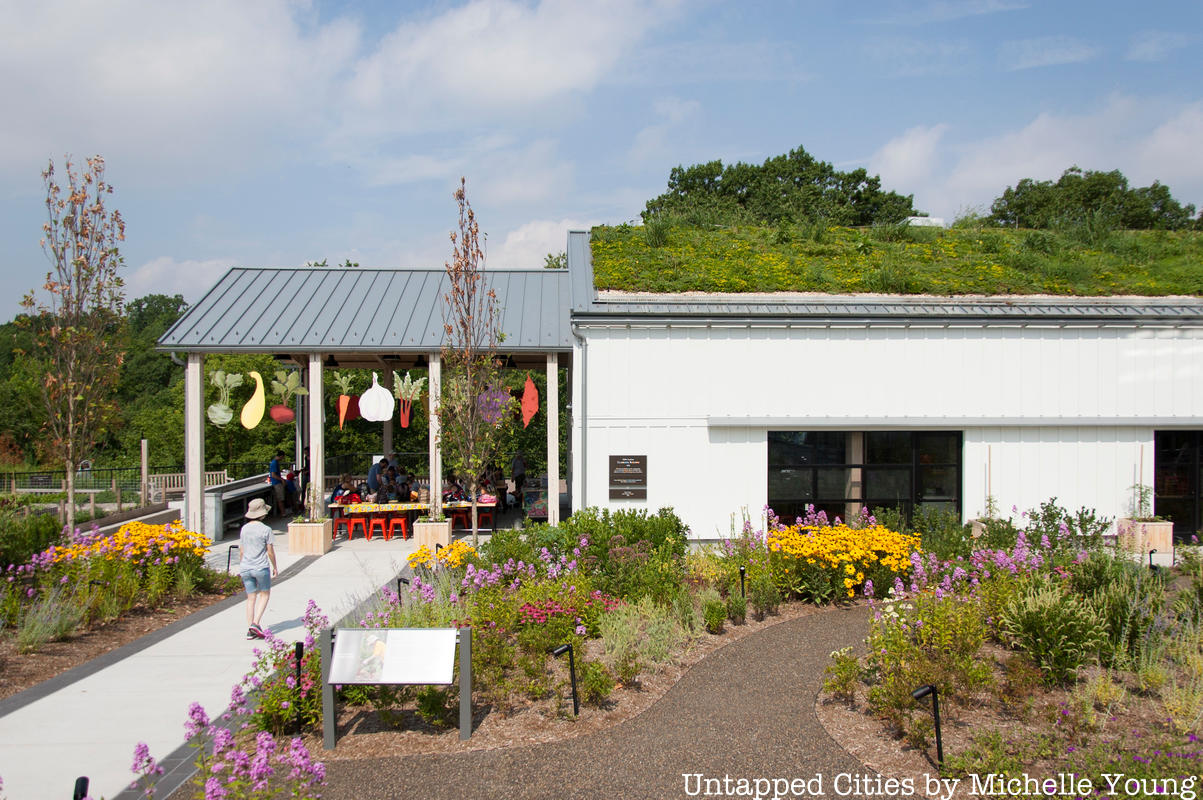The Edible Academy at the New York Botanical Garden is a $28 million expansion of the Botanical Garden’s edible garden-based education program, built upon the historic site of the Ruth Rea Howell Vegetable Garden where the family mansion of the Lorillard family once stood. The Lorillard family, originally from Lower Manhattan, made their fortune in snuff for tobacco in the Colonial period and began purchasing properties along the Bronx River.
The goal of the Edible Academy is to promote “healthy eating, healthy living” says Ursula Dean Hoskins, Vice President of Capital Projects at the Garden. Most of the growing population in New York City, “don’t know where their food comes from,” she tells us. The overarching mission of the Edible Academy is situated within growing local and national concern about childhood obesity and related diseases, as well as lack of accessibility to fresh, affordable fruits and vegetables in the city’s various food deserts.
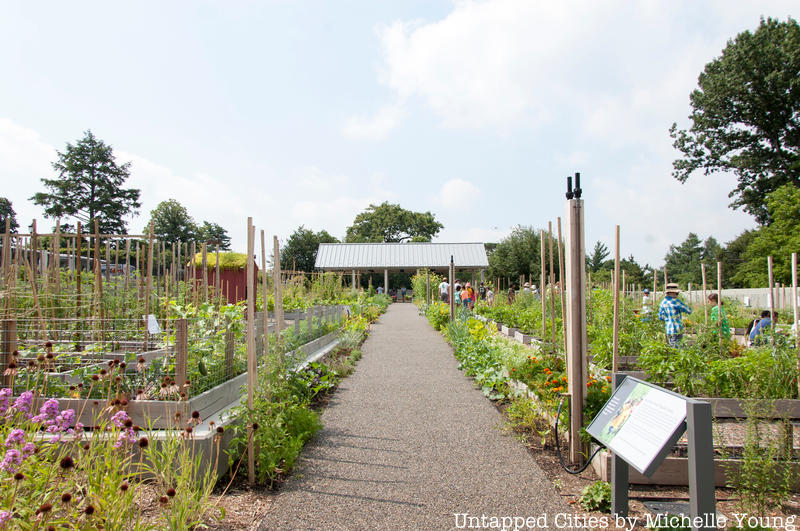
The area where the New York Botanical Garden is located has one of the highest rates of food insecurity in the country. As the Botanical Garden states, “extensive research has shown that children who plant and harvest their own produce develop important life skills and are more likely to eat fresh fruit and vegetables,” and it is hoped that the program, and the principles learned here, will serve as a critical life skill investment for the residents of the Bronx and New York City as a whole.
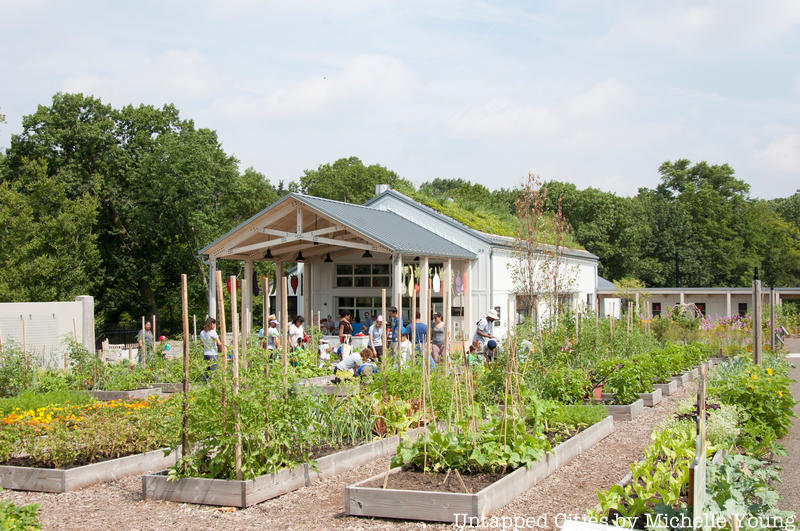
The indoor and outdoor facility was designed by the architecture firm Cooper Robertson, using state-of-the-art sustainability technologies. The Children’s Gardening Program at the New York Botanical Garden was founded in 1956, offering urban children the chance to connect with nature. The new Edible Academy facility will be able to serve 100,000 people annually, and enables the program to not only double its capacity but support year-round operation. Mayor Bill de Blasio stated that with the newly expanded Edible Academy, “more children, educators, and families can use this extraordinary resource to better understand the connections between diet, well-being, and the stewardship of our planet.”
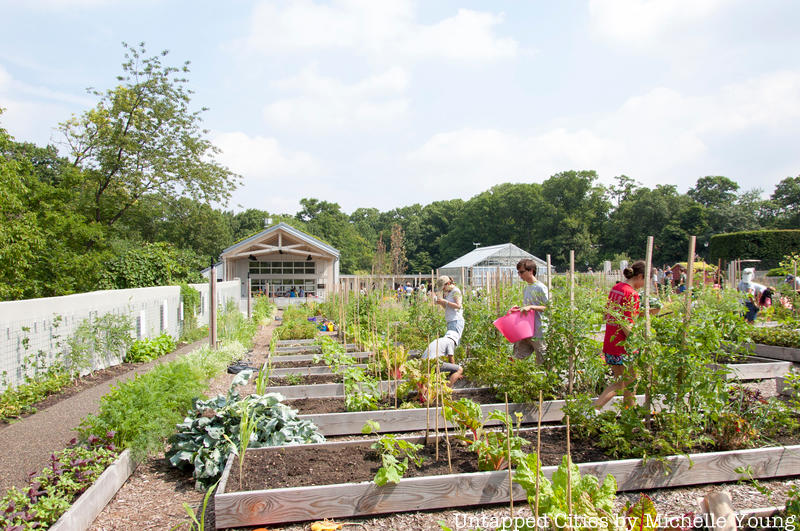
The Edible Academy melds modern design with age-old practices on gardening and planting, thus providing a visually accessible learning space for participants young and old while reinforcing traditional skills in healthy growing and living that have been lost in the modern urban environment. The buildings were inspired by “vernacular forms of agricultural barns and sheds,” contends the New York Botanical Garden, modernized through a green roof, eight geothermal wells that heat and cool, a freestanding solar pavilion, and composting bathrooms. Hoskins tells us that the goal was “to be as green as possible and utilize as much green infrastructure as [they could].” The designs were intended to meet LEED Gold certification.
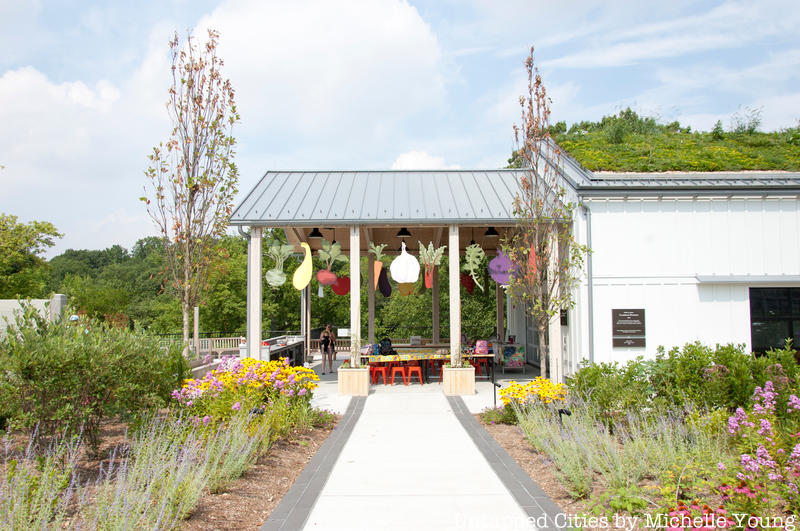
But sustainability goes beyond architectural and sustainable design: the Botanical Garden preserved the soil from the former beds during the construction process. In addition, the five year plan from master plan to opening of the Edible Garden included efforts to better connect the northeastern section of the Botanical Garden, which has a particularly steep terrain leading down to the Bronx River, to the East Gate. The new connector, which offers more convenient access for Bronx residents to the east, and the compost bathroom opened in May 2017, more than a year in advance of the Edible Academy itself.
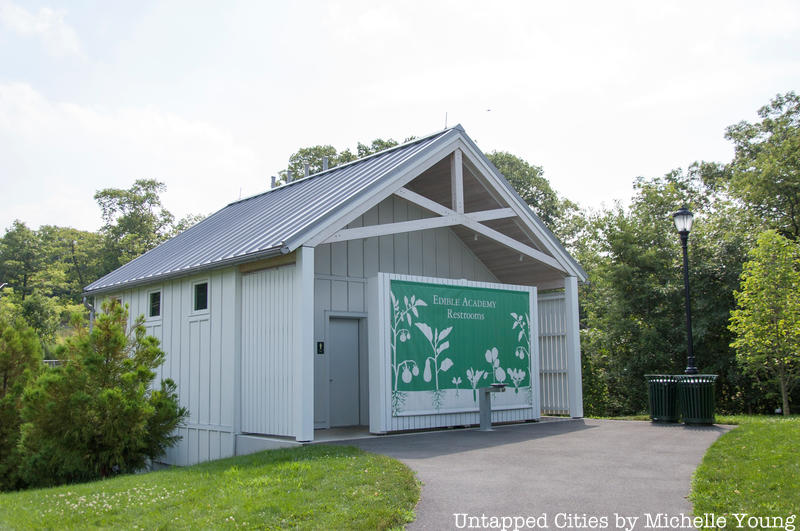
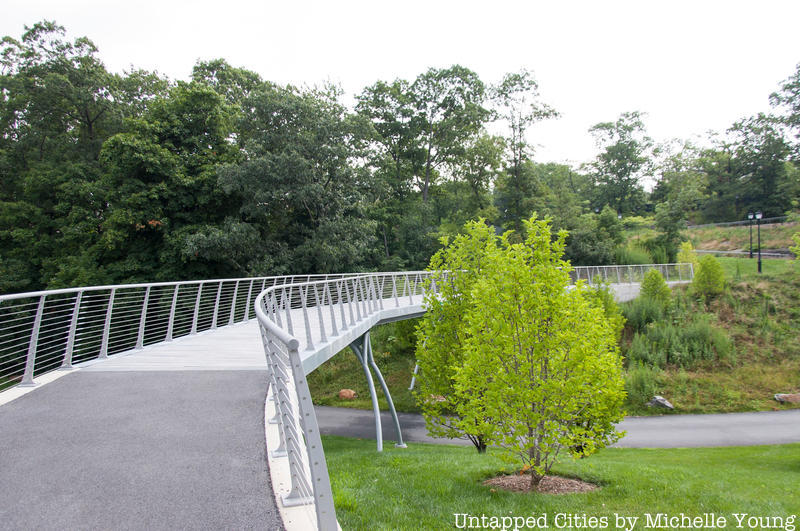
The Edible Academy consists of numerous connected components. The vegetable garden, first established in 1993, consists of the three gardens – Green Thumb Garden, the Global Garden, and the Children’s Gardening Program Garden – where much of the outdoor activity and education takes place. The Classroom Building, which looks like a white farmhouse, contains a Demonstration Kitchen Classroom, the Palm Family Edible Academy Technology Lab, and the green roof, which is planted with succulents that improve building insulation and retain stormwater.
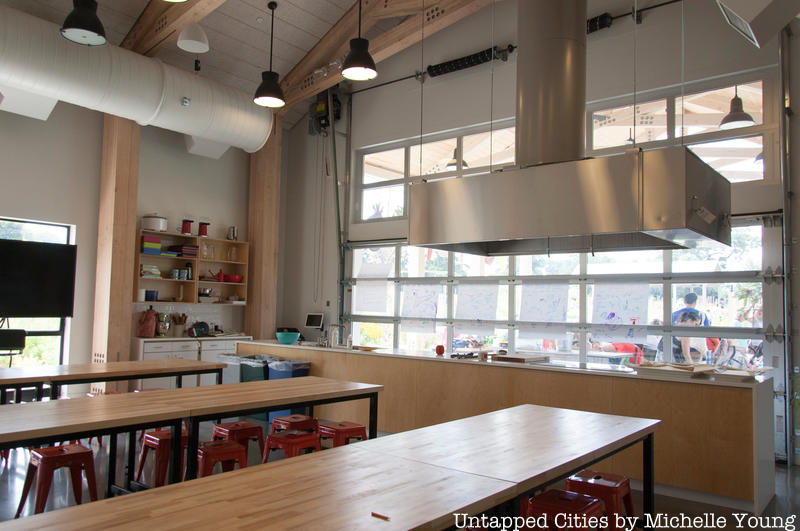
The Demonstration Kitchen can be opened out onto a covered terrace, the Gossett Overlook Pavilion, by sliding up a garage-style door the width of the building offering indoor-outdoor teaching opportunities. There, you can see the Bronx River Waterfall and the Thain Family Forest, the largest remaining old-growth forest in New York City. The Burke Amphitheater, with the backdrop of the Bronx River and the Thain Family Forest as well, allows the Edible Academy to host events up to 350 people.
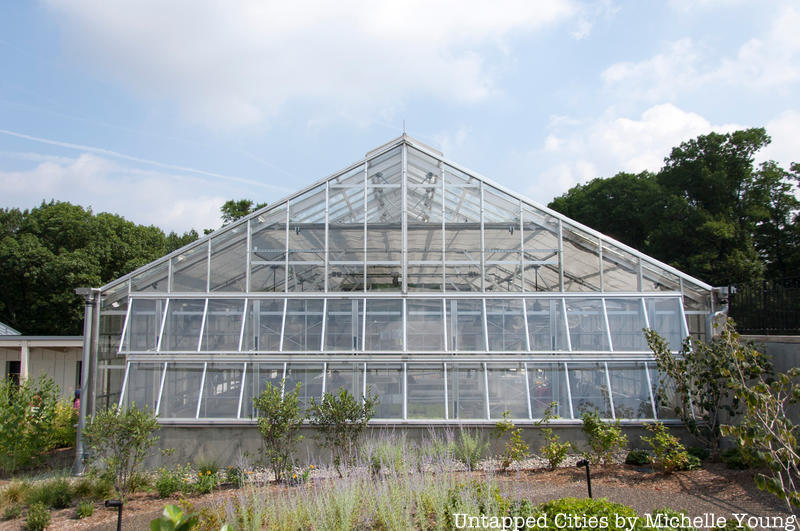
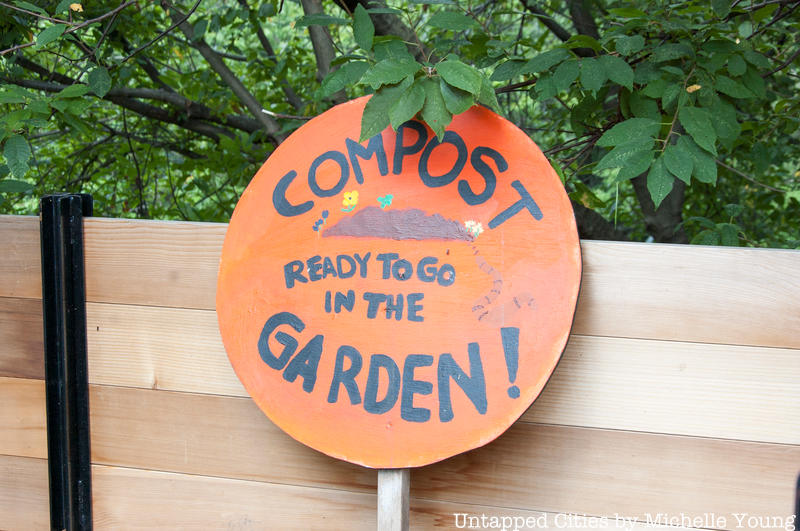
A separate teaching greenhouse provides controlled growing conditions to give seedlings the best chance for propagation, with an outdoor nursery to help them acclimate to exterior growing conditions before they are planted in the garden. The greenhouse is temperature controlled, designed for maximum sun exposure, with a shading system built in. A open-air Solar Pavilion next to the vegetable gardens is a popular space for informal gathering as well as lessons.
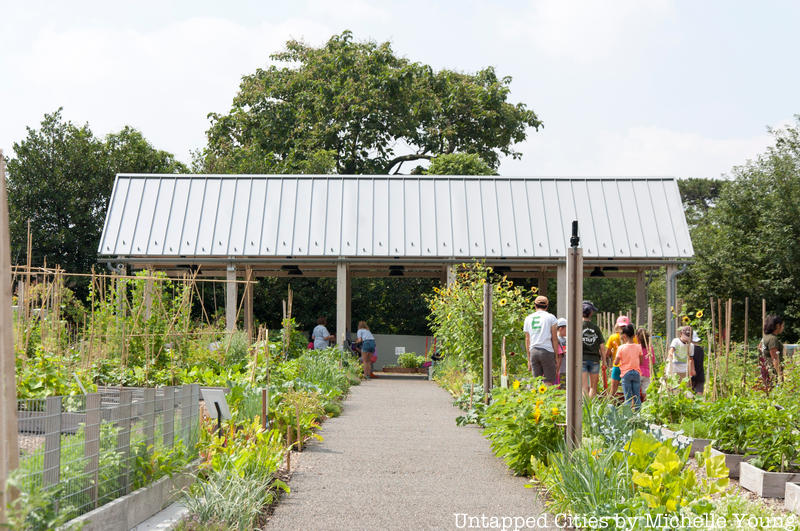
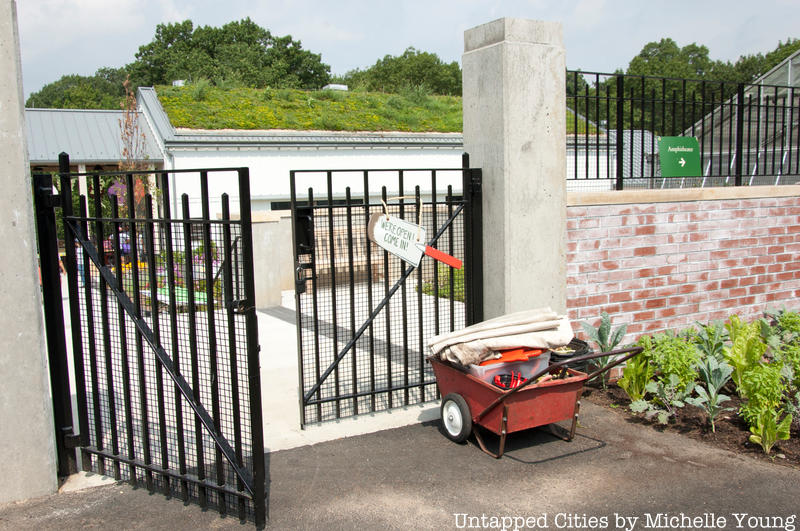
On a visit to the Edible Academy, which also offers family programs, summer camps and day visits, don’t miss the Barnsley Beds which are on the right side as you approach the Edible Academy. These ornamental eight vegetable garden beds are inspired by English garden designer Rosemary Verey.
Next, check out the Top 10 Secrets of the New York Botanical Garden.






